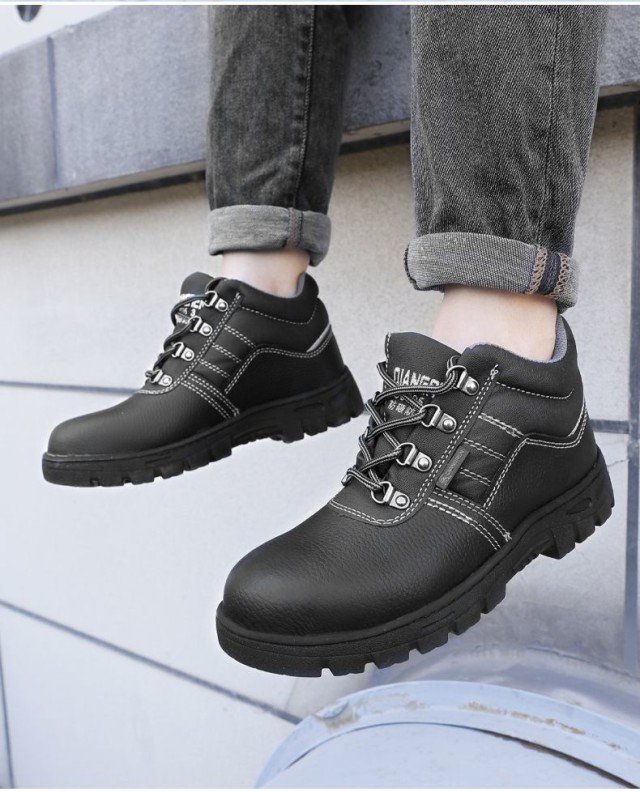Every year, thousands of workplace injuries could be prevented with the right safety footwear. But with so many options available, how do you select boots that truly match your job's risks? This guide breaks down critical safety features—from crush protection to chemical resistance—and shows how to align them with real-world occupational hazards.
Choosing the Right Safety Boots for Your Job
Safety boots aren't one-size-fits-all. The right pair depends on your workplace's specific dangers. Research shows that properly matched safety footwear reduces injury rates by over half in high-risk industries.
How Steel Toes and Metatarsal Guards Prevent Crush Injuries
- Steel toes: The most recognizable feature, these protect against impacts up to 75 pounds of force (meeting ASTM F2413 standards). Ideal for construction, warehousing, or any environment with falling objects.
- Metatarsal guards: Extend protection to the vulnerable upper foot. Essential for jobs involving heavy rolling equipment (e.g., forklifts or pallet jacks).
Did you know? A steel toe alone won’t shield against side impacts—look for boots with full-foot coverage if crush risks are multidirectional.
When Electrical Hazard Resistance Matters: Voltage Thresholds Explained
Boots rated for electrical hazards use non-conductive materials (rubber soles, composite shanks) to block currents. Key thresholds:
- Must withstand 18,000 volts at 60 Hz for 1 minute without current penetration (per ASTM standards).
- Critical for electricians, utility workers, or anyone near live circuits.
Warning: Conductive materials (e.g., metal eyelets) disqualify boots from electrical hazard ratings. Always check labels.
Safety Boots in Extreme Environments
Chemical Resistance: Decoding Material Compatibility Charts
Not all boot materials resist the same chemicals. For labs, factories, or oil rigs:
- Nitrile soles: Best for oils and solvents.
- Neoprene uppers: Resist acids and alkalis.
- Pro tip: Match boots to Safety Data Sheets (SDS) for your workplace’s specific chemicals.
Waterproofing vs. Breathability in Outdoor Work
- Waterproof boots (e.g., Gore-Tex®): Necessary for wet conditions but may trap heat.
- Breathable mesh: Better for hot climates but offers less liquid protection.
Balance needed: In humid environments, prioritize moisture-wicking liners to prevent fungal growth.
Beyond Protection: Practical Design Considerations
Zipper-and-Strap Systems: Balancing Speed and Debris Protection
- Zippers: Enable quick donning/doffing but may compromise debris sealing.
- Traditional laces: More adjustable but slower to fasten.
For dusty or muddy sites: Look for storm flaps over zippers to block particulate ingress.
Ready to Equip Your Team with Right-For-The-Job Safety Boots?
3515 partners with distributors and bulk buyers to deliver OSHA-compliant footwear engineered for real workplace risks. From electrical hazard-rated designs to chemical-resistant builds, our range combines certified protection with all-day comfort. [Contact 3515] to discuss volume solutions tailored to your industry’s needs.
Final thought: The best safety boots aren’t just about meeting standards—they’re about matching protection to the unseen hazards workers face daily.
Related Products
- Wholesale Customizable Suede Safety Boots - Puncture-Proof with Velcro Closure
- Customizable Anti-Smash Safety Boots for Wholesale & Private Label Manufacturing
- Wholesale Mesh Steel Toe Safety Shoes with Dial Closure Factory Production
- Safety Footwear Wholesale Manufacturer for Custom OEM/ODM Production
- Wholesale Safety Footwear Manufacturer for Bulk & Custom OEM Orders
Related Articles
- How to Choose Work Boots That Match Your Job's Safety Demands
- How to Choose Work Boot Materials for Maximum Safety and Durability
- Work Boots vs. Western Boots: How to Choose the Right Footwear for Labor Safety
- How Safety Work Boots Engineer Protection: Features and Standards for Targeted Hazard Mitigation
- How to Choose Work Boots That Match Your Job Demands and Safety Needs



















